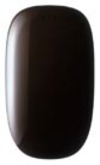Essay on the place of form and function in design.
“All it takes to fly is to hurl yourself at the ground... and miss.” Douglas Adams
Form and function are attributes that all objects possess in varying proportions. An oil painting for example is nearly all form…except when it serves to hide the wall safe.  Barbed wire, on the other hand is mostly all function except when used symbolically by Amnesty International (see left). This is not to imply that a given object possesses only one of these attributes to the complete exclusion of the other. I know of beautiful barbed wire (see Mr. Smish & Madame Buttly™ razor wire at right).
Barbed wire, on the other hand is mostly all function except when used symbolically by Amnesty International (see left). This is not to imply that a given object possesses only one of these attributes to the complete exclusion of the other. I know of beautiful barbed wire (see Mr. Smish & Madame Buttly™ razor wire at right).
Form and function therefore define a spectrum. Maybe that spectrum can be thought of simply as a range that goes from beautiful but useless to ugly but useful.
Does form always follow function as the 19th century American architect Louis Henri Sullivan proposed? Consider also then if necessity is always the mother of invention or might it sometimes be the other way around as proposed by Thorstein Veblen? (After all, it was not for many years after its invention that a good use was found for the telephone.) Sullivan and his followers felt that in the design process, the resulting form was determined by the function for which it was being designed. It is my opinion that if this were truly so, all objects serving the same function would eventually be reduced to a single form after numerous design iterations. This is clearly not the case in real life. 
Think of any object, say the cell phone, to appreciate the myriad forms developed by thousands of design firms all to serve the same function (see PENCK phone at right). Clearly, form is more important to us than simply performing the task for which it was designed.
(Please…don’t be shy…stop reading if you feel I’m rambling. I do tend to do that ☺.) I guess this brings us to aesthetics and its importance in daily life. I know many individuals who exist at the function end of the spectrum. They go out to buy, say, a chair (…you know I’ll be submitting a full post on this little beauty of a topic at a later date!) and what they want is simply an object to sit on. Period. For them, a chair is a chair is a chair and apart from some very basic decorative requirements, nearly any chair will do the job (I don’t intent to be demeaning to anyone…just making a point. Chacun son gout!). Others, myself included, have a desire, no, a need to live on the form end of the spectrum. It can be a bit of an obsession. I, for one, can’t even buy a book without considering the design aesthetics of the cover…no way to judge a book, you say. Well I agree…but I just can’t help it! Everything I own has to please my aesthetically. If is doesn’t, I suffer the damned thing but never fall in love with it. On the other hand, when I find an object whose form enchants me, the love affair is seemingly endless.
Take my dinning room table for instance (…well, no…you can’t have it!).
Purchased around 1980 from van Leeuwen Boomkamp in Ottawa, my La Barca table (designed by Piero De Martini and manufactured by Cassina, Italy.), since discontinued, has provided me with no end of joy and pleasure. I kid you not that even today, some 26 years later, I still run my hand along it and get a rise from the little hairs in the back of my neck. Sitting at that table, I often get a déjà vu that transports me right back to the moment way back then when I uncrated what was to be my first important design acquisition. The déjà vu even includes the smells of new wood and cardboard and the sounds of George Benson’s “Give Me The Night” blasting from the speakers. Oh if that table could speak…it would tell of drunken evenings, fine food with friends and animated discussions about politics, religion and sex.
For me, it is the form of an object that gives it a soul (figuratively of course). Good function and bad form equals no soul. But great form and NO function…that’s art!
Joseph Froncioni








































































































Thanks for the comments Mikey!
I agree with you to a certain extent but I would put it this way: Imposing the constraints of fuel economy and aerodynamics as designers are apt to do, there is a TREND toward the same general shape for cars. What continues to distinguish the different brands are the bells, whistles and frills designers apply to their cars to satisfy the buyers' FORM demands. Otherwise, all cars designed to go fast would look like F1 cars and all urban vehicles would be SMART CARS.
Keep commenting bro!
Posted by: Joseph Froncioni | September 20, 2006 at 10:54 AM
Hey bro,
In terms of all object serving the same function eventually reducing to a single form.......If you look at the automotive industry, most car manufacturers today, with the exception of the newer hybrids and smart cars, have all been reduced to very similar shapes. In this case, fuel efficiency through improved aerodynamics, was the main or common design input or requirement.
Sometimes, its funny how if you impose certain requirements, things will tend towards the same form or shape.
Cheers
Mikey
Posted by: Brother Mikey | September 20, 2006 at 08:12 AM